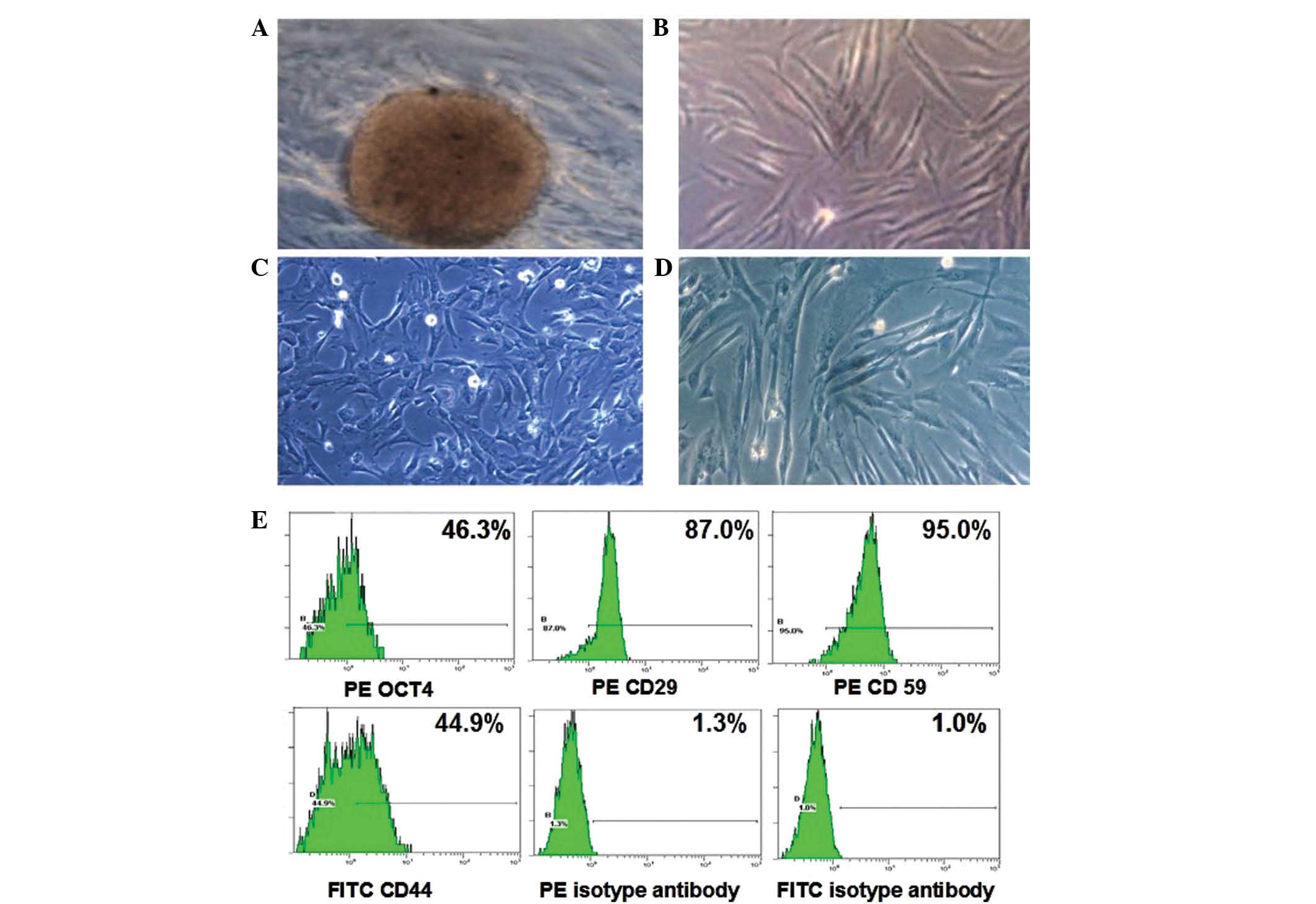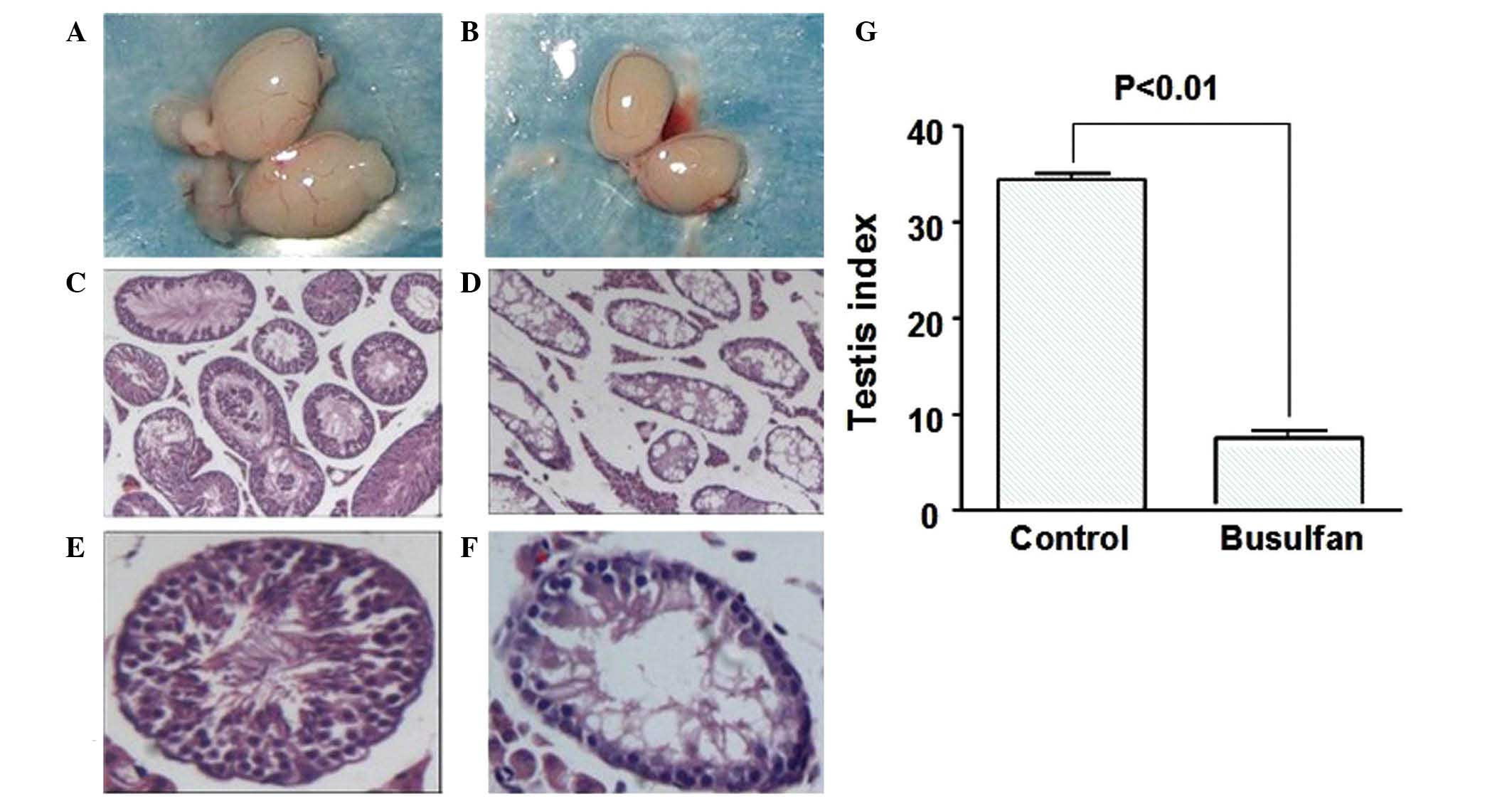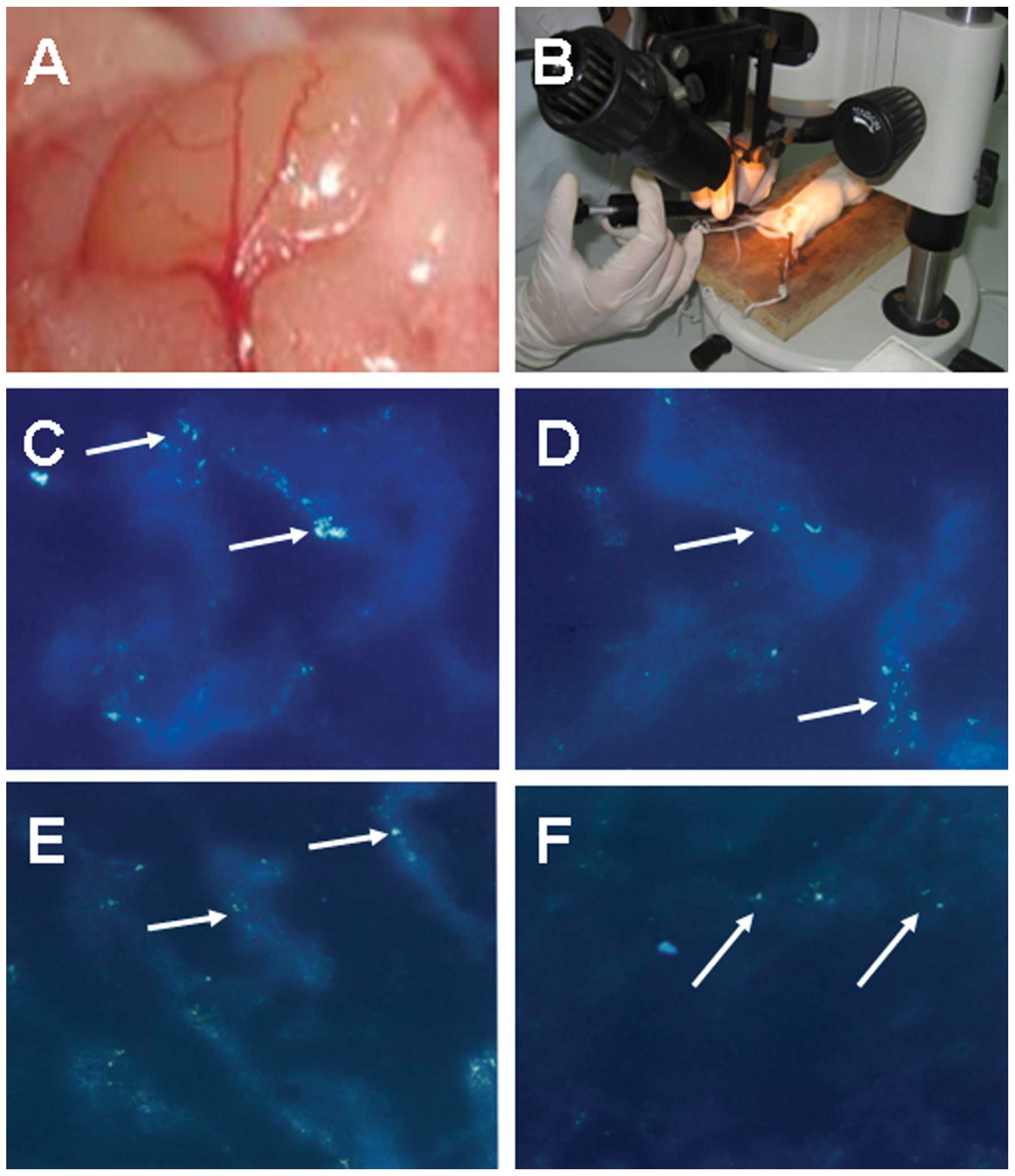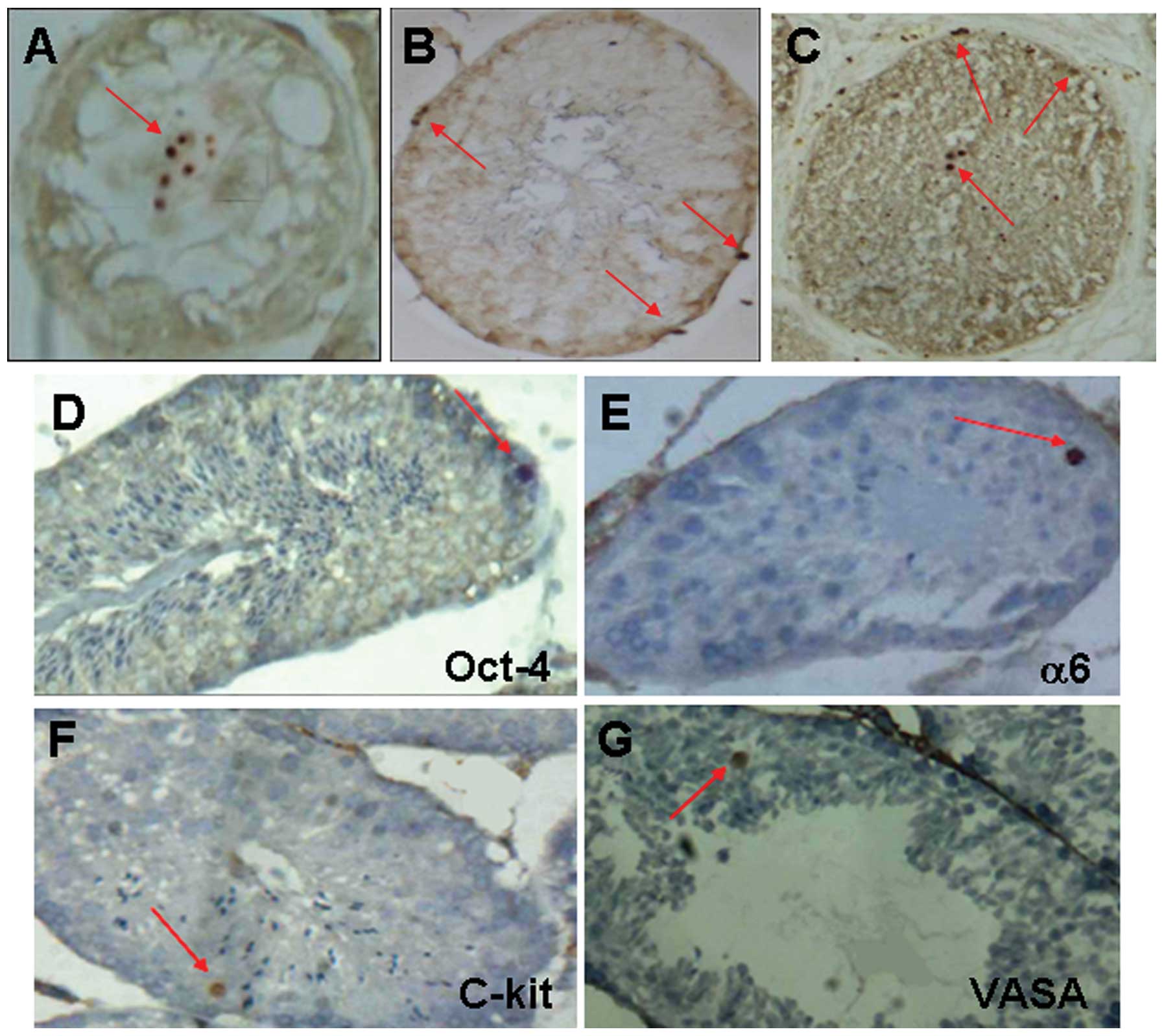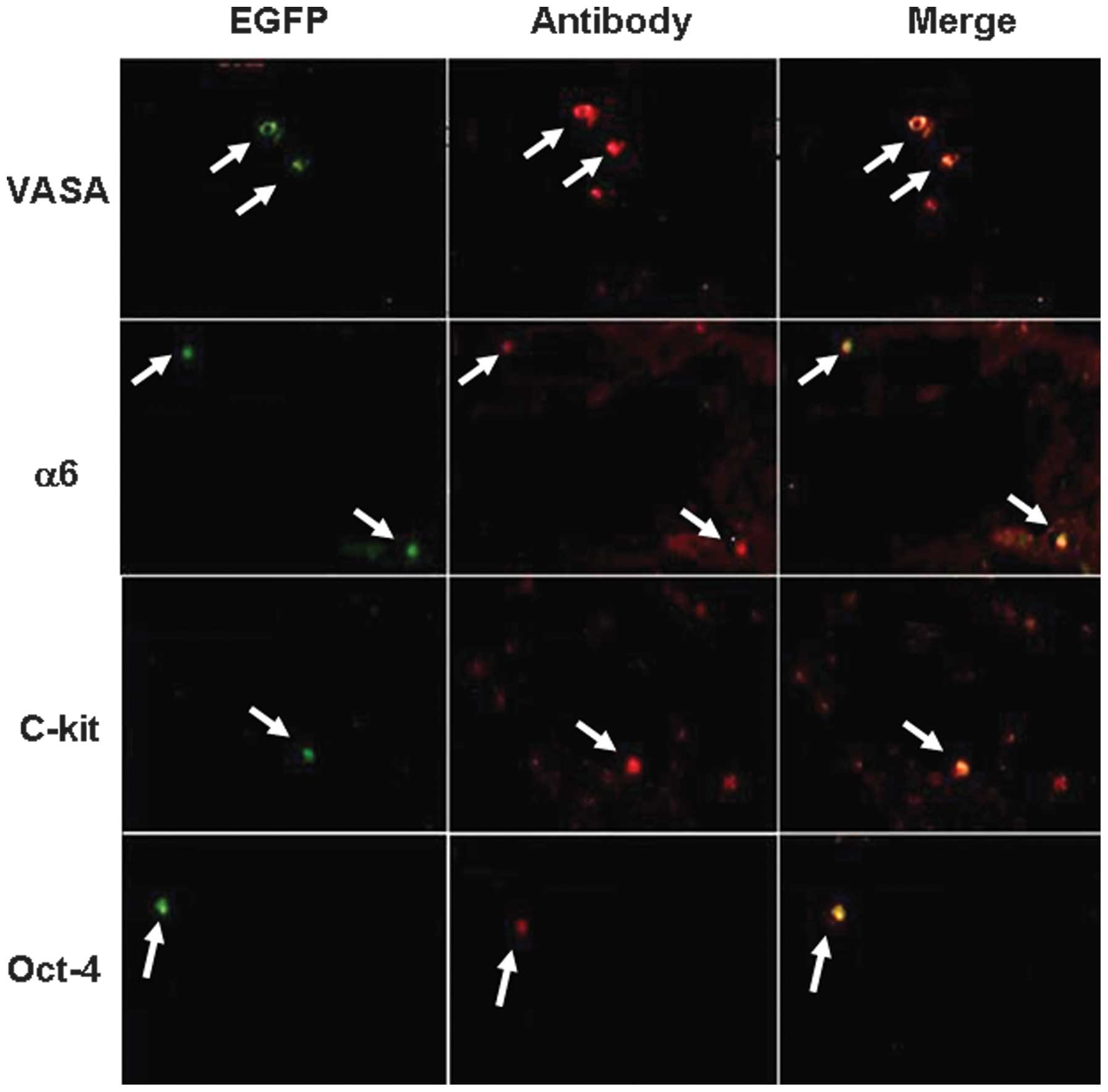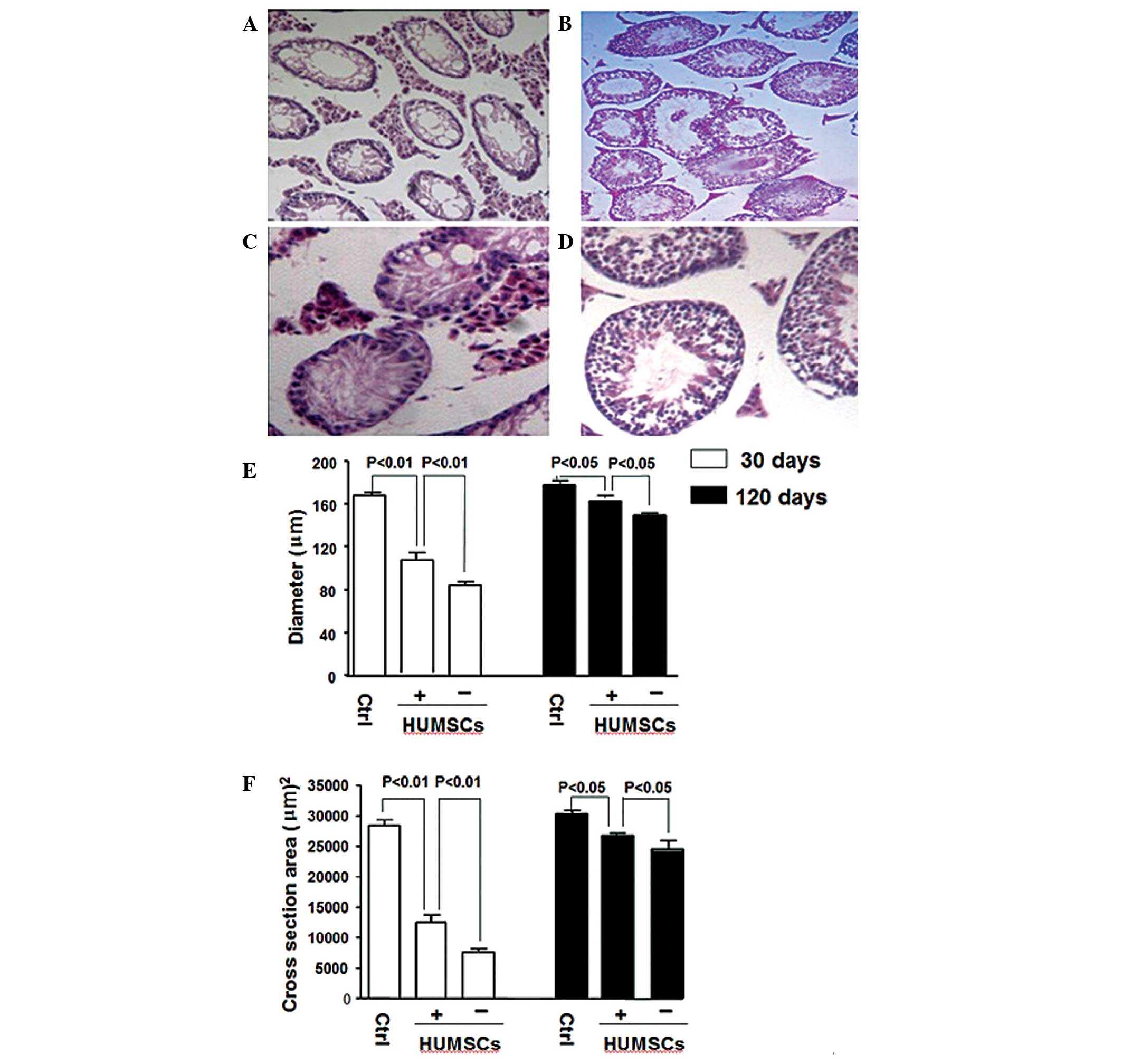|
1
|
Kleiman SE, Yogev L, Gamzu R, Hauser R,
Botchan A, Lessing JB, Paz G and Yavetz H: Genetic evaluation of
infertile men. Hum Reprod. 14:33–38. 1999. View Article : Google Scholar : PubMed/NCBI
|
|
2
|
O’Flynn O’Brien KL, Varghese AC and
Agarwal A: The genetic causes of male factor infertility: a review.
Fertil Steril. 93:1–12. 2010. View Article : Google Scholar
|
|
3
|
Larson KL, DeJonge CJ, Barnes AM, Jost LK
and Evenson DP: Sperm chromatin structure assay parameters as
predictors of failed pregnancy following assisted reproductive
techniques. Hum Reprod. 15:1717–1722. 2000. View Article : Google Scholar : PubMed/NCBI
|
|
4
|
Bucay N, Yebra M, Cirulli V, Afrikanova I,
Kaido T, Hayek A and Montgomery AM: A novel approach for the
derivation of putative primordial germ cells and sertoli cells from
human embryonic stem cells. Stem Cells. 27:68–77. 2009. View Article : Google Scholar
|
|
5
|
Clark AT, Bodnar MS, Fox M, Rodriquez RT,
Abeyta MJ, Firpo MT and Pera RA: Spontaneous differentiation of
germ cells from human embryonic stem cells in vitro. Hum Mol Genet.
13:727–739. 2004. View Article : Google Scholar : PubMed/NCBI
|
|
6
|
Geijsen N, Horoschak M, Kim K, Gribnau J,
Eggan K and Daley GQ: Derivation of embryonic germ cells and male
gametes from embryonic stem cells. Nature. 427:148–154. 2004.
View Article : Google Scholar
|
|
7
|
Kee K, Gonsalves JM, Clark AT and Pera RA:
Bone morphogenetic proteins induce germ cell differentiation from
human embryonic stem cells. Stem Cells Dev. 15:831–837. 2006.
View Article : Google Scholar
|
|
8
|
Kerkis A, Fonseca SA, Serafim RC,
Lavagnolli TM, Abdelmassih S, Abdelmassih R and Kerkis I: In vitro
differentiation of male mouse embryonic stem cells into both
presumptive sperm cells and oocytes. Cloning Stem Cells. 9:535–548.
2007. View Article : Google Scholar : PubMed/NCBI
|
|
9
|
Nayernia K, Nolte J, Michelmann HW, Lee
JH, Rathsack K, Drusenheimer N, Dev A, Wulf G, Ehrmann IE, Elliott
DJ, Okpanyi V, Zechner U, Haaf T, Meinhardt A and Engel W: In
vitro-differentiated embryonic stem cells give rise to male gametes
that can generate offspring mice. Dev Cell. 11:125–132. 2006.
View Article : Google Scholar : PubMed/NCBI
|
|
10
|
Tilgner K, Atkinson SP, Golebiewska A,
Stojkovic M, Lako M and Armstrong L: Isolation of primordial germ
cells from differentiating human embryonic stem cells. Stem Cells.
26:3075–3085. 2008. View Article : Google Scholar : PubMed/NCBI
|
|
11
|
Toyooka Y, Tsunekawa N, Akasu R and Noce
T: Embryonic stem cells can form germ cells in vitro. Proc Natl
Acad Sci USA. 100:11457–11462. 2003. View Article : Google Scholar : PubMed/NCBI
|
|
12
|
Nayernia K, Lee JH, Drusenheimer N, Nolte
J, Wulf G, Dressel R, Gromoll J and Engel W: Derivation of male
germ cells from bone marrow stem cells. Lab Invest. 86:654–663.
2006. View Article : Google Scholar : PubMed/NCBI
|
|
13
|
Yang S, Bo J, Hu H, Guo X, Tian R, Sun C,
Zhu Y, Li P, Liu P, Zou S, Huang Y and Li Z: Derivation of male
germ cells from induced pluripotent stem cells in vitro and in
reconstituted seminiferous tubules. Cell Prolif. 45:91–100. 2012.
View Article : Google Scholar : PubMed/NCBI
|
|
14
|
Danner S, Kajahn J, Geismann C, Klink E
and Kruse C: Derivation of oocyte-like cells from a clonal
pancreatic stem cell line. Mol Hum Reprod. 13:11–20. 2007.
View Article : Google Scholar
|
|
15
|
Dyce PW, Wen L and Li J: In vitro germline
potential of stem cells derived from fetal porcine skin. Nat Cell
Biol. 8:384–390. 2006. View
Article : Google Scholar : PubMed/NCBI
|
|
16
|
Lue Y, Erkkila K, Liu PY, Ma K, Wang C,
Hikim AS and Swerdloff RS: Fate of bone marrow stem cells
transplanted into the testis: potential implication for men with
testicular failure. Am J Pathol. 170:899–908. 2007. View Article : Google Scholar : PubMed/NCBI
|
|
17
|
Chao KC, Chao KF, Fu YS and Liu SH:
Islet-like clusters derived from mesenchymal stem cells in
Wharton’s Jelly of the human umbilical cord for transplantation to
control type 1 diabetes. PLoS One. 3:e14512008. View Article : Google Scholar
|
|
18
|
Karahuseyinoglu S, Cinar O, Kilic E, Kara
F, Akay GG, Demiralp DO, Tukun A, Uckan D and Can A: Biology of
stem cells in human umbilical cord stroma: in situ and in vitro
surveys. Stem Cells. 25:319–331. 2007. View Article : Google Scholar
|
|
19
|
Karahuseyinoglu S, Kocaefe C, Balci D,
Erdemli E and Can A: Functional structure of adipocytes
differentiated from human umbilical cord stroma-derived stem cells.
Stem Cells. 26:682–691. 2008. View Article : Google Scholar : PubMed/NCBI
|
|
20
|
Mitchell KE, Weiss ML, Mitchell BM, Martin
P, Davis D, Morales L, Helwig B, Beerenstrauch M, Abou-Easa K,
Hildreth T, Troyer D and Medicetty S: Matrix cells from Wharton’s
jelly form neurons and glia. Stem Cells. 21:50–60. 2003. View Article : Google Scholar
|
|
21
|
Pereira WC, Khushnooma I, Madkaikar M and
Ghosh K: Reproducible methodology for the isolation of mesenchymal
stem cells from human umbilical cord and its potential for
cardiomyocyte generation. J Tissue Eng Regen Med. 2:394–399. 2008.
View Article : Google Scholar : PubMed/NCBI
|
|
22
|
Lu LL, Liu YJ, Yang SG, Zhao QJ, Wang X,
Gong W, Han ZB, Xu ZS, Lu YX, Liu D, Chen ZZ and Han ZC: Isolation
and characterization of human umbilical cord mesenchymal stem cells
with hematopoiesis-supportive function and other potentials.
Haematologica. 91:1017–1026. 2006.PubMed/NCBI
|
|
23
|
Weiss ML, Medicetty S, Bledsoe AR,
Rachakatla RS, Choi M, Merchav S, Luo Y, Rao MS, Velagaleti G and
Troyer D: Human umbilical cord matrix stem cells: preliminary
characterization and effect of transplantation in a rodent model of
Parkinson’s disease. Stem Cells. 24:781–792. 2006. View Article : Google Scholar
|
|
24
|
Weiss ML, Anderson C, Medicetty S,
Seshareddy KB, Weiss RJ, VanderWerff I, Troyer D and McIntosh KR:
Immune properties of human umbilical cord Wharton’s jelly-derived
cells. Stem Cells. 26:2865–2874. 2008. View Article : Google Scholar : PubMed/NCBI
|
|
25
|
Huang P, Lin LM, Wu XY, Tang QL, Feng XY,
Lin GY, Lin X, Wang HW, Huang TH and Ma L: Differentiation of human
umbilical cord Wharton’s jelly-derived mesenchymal stem cells into
germ-like cells in vitro. J Cell Biochem. 109:747–754.
2010.PubMed/NCBI
|
|
26
|
Bucci LR and Meistrich ML: Effects of
busulfan on murine spermatogenesis: cytotoxicity, sterility, sperm
abnormalities, and dominant lethal mutations. Mutat Res.
176:259–268. 1987. View Article : Google Scholar : PubMed/NCBI
|
|
27
|
Brinster RL and Avarbock MR: Germline
transmission of donor haplotype following spermatogonial
transplantation. Proc Natl Acad Sci USA. 91:11303–11307. 1994.
View Article : Google Scholar : PubMed/NCBI
|
|
28
|
Wang L, Ott L, Seshareddy K, Weiss ML and
Detamore MS: Musculoskeletal tissue engineering with human
umbilical cord mesenchymal stromal cells. Regen Med. 6:95–109.
2011. View Article : Google Scholar :
|
|
29
|
von Bubnoff N and Duyster J: Chronic
myelogenous leukemia: treatment and monitoring. Dtsch Arztebl Int.
107:114–121. 2010.PubMed/NCBI
|
|
30
|
Ogawa T, Aréchaga JM, Avarbock MR and
Brinster RL: Transplantation of testis germinal cells into mouse
seminiferous tubules. Int J Dev Biol. 41:111–122. 1997.PubMed/NCBI
|
|
31
|
Shinohara T, Avarbock MR and Brinster RL:
beta1- and alpha6-integrin are surface markers on mouse
spermatogonial stem cells. Proc Natl Acad Sci USA. 96:5504–5509.
1999. View Article : Google Scholar : PubMed/NCBI
|
|
32
|
Anderson RA, Fulton N, Cowan G, Coutts S
and Saunders PT: Conserved and divergent patterns of expression of
DAZL, VASA and OCT4 in the germ cells of the human fetal ovary and
testis. BMC Dev Biol. 7:1362007. View Article : Google Scholar : PubMed/NCBI
|
|
33
|
Dann CT, Alvarado AL, Molyneux LA, Denard
BS, Garbers DL and Porteus MH: Spermatogonial stem cell
self-renewal requires OCT4, a factor downregulated during retinoic
acid-induced differentiation. Stem Cells. 26:2928–2937. 2008.
View Article : Google Scholar : PubMed/NCBI
|
|
34
|
Rajpert-De Meyts E, Hanstein R, Jørgensen
N, Graem N, Vogt PH and Skakkebaek NE: Developmental expression of
POU5F1 (OCT-3/4) in normal and dysgenetic human gonads. Hum Reprod.
19:1338–1344. 2004. View Article : Google Scholar : PubMed/NCBI
|
|
35
|
Castrillon DH, Quade BJ, Wang TY, Quigley
C and Crum CP: The human VASA gene is specifically expressed in the
germ cell lineage. Proc Natl Acad Sci USA. 97:9585–9590. 2000.
View Article : Google Scholar : PubMed/NCBI
|
|
36
|
He Z, Kokkinaki M, Jiang J, Dobrinski I
and Dym M: Isolation, characterization, and culture of human
spermatogonia. Biol Reprod. 82:363–372. 2010. View Article : Google Scholar :
|
|
37
|
Sandlow JI, Feng HL and Sandra A:
Localization and expression of the c-kit receptor protein in human
and rodent testis and sperm. Urology. 49:494–500. 1997. View Article : Google Scholar : PubMed/NCBI
|
|
38
|
Ehmcke J, Joshi B, Hergenrother SD and
Schlatt S: Aging does not affect spermatogenic recovery after
experimentally induced injury in mice. Reproduction. 133:75–83.
2007. View Article : Google Scholar : PubMed/NCBI
|
|
39
|
Matsuzuka T, Rachakatla RS, Doi C, Maurya
DK, Ohta N, Kawabata A, Pyle MM, Pickel L, Reischman J, Marini F,
Troyer D and Tamura M: Human umbilical cord matrix-derived stem
cells expressing interferon-beta gene significantly attenuate
bronchioloalveolar carcinoma xenografts in SCID mice. Lung Cancer.
70:28–36. 2010. View Article : Google Scholar : PubMed/NCBI
|
|
40
|
Studeny M, Marini FC, Dembinski JL,
Zompetta C, Cabreira-Hansen M, Bekele BN, Champlin RE and Andreeff
M: Mesenchymal stem cells: potential precursors for tumor stroma
and targeted-delivery vehicles for anticancer agents. J Natl Cancer
Inst. 96:1593–1603. 2004. View Article : Google Scholar : PubMed/NCBI
|
|
41
|
Liu H, Zhang J, Liu CY, Wang IJ, Sieber M,
Chang J, Jester JV and Kao WW: Cell therapy of congenital corneal
diseases with umbilical mesenchymal stem cells: lumican null mice.
PLoS One. 5:e107072010. View Article : Google Scholar : PubMed/NCBI
|
|
42
|
Creemers LB, den Ouden K, van Pelt AM and
de Rooij DG: Maintenance of adult mouse type A spermatogonia in
vitro: influence of serum and growth factors and comparison with
prepubertal spermatogonial cell culture. Reproduction. 124:791–799.
2002. View Article : Google Scholar
|
|
43
|
Huleihel M and Lunenfeld E: Regulation of
spermatogenesis by paracrine/autocrine testicular factors. Asian J
Androl. 6:259–268. 2004.PubMed/NCBI
|
|
44
|
Pellegrini M, Grimaldi P, Rossi P, Geremia
R and Dolci S: Developmental expression of BMP4/ALK3/SMAD5
signaling pathway in the mouse testis: a potential role of BMP4 in
spermatogonia differentiation. J Cell Sci. 116:3363–3372. 2003.
View Article : Google Scholar : PubMed/NCBI
|
|
45
|
Takabayashi S, Sasaoka Y, Yamashita M,
Tokumoto T, Ishikawa K and Noguchi M: Novel growth factor
supporting survival of murine primordial germ cells: evidence from
conditioned medium of ter fetal gonadal somatic cells. Mol Reprod.
60:384–396. 2001. View Article : Google Scholar
|



